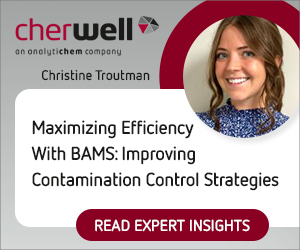Article by Susan Chung, Marketing Manager, Macrogen Laboratories
Antimicrobial resistance (AMR) may be the largest global threat that nobody knows about. According to the Centers for Disease Control and Prevention (CDC), at least two million people get an antibiotic-resistant infection in the U.S. every year, and at least 23,000 of them die.
Individuals may contract these antibiotic-resistant infections while receiving healthcare, or out in their communities. Common examples include:
- Gonorrhea
- Tuberculosis (TB)
- Foodborne infections
Antibiotic resistance means bacteria have become resistant to the drugs designed to kill them. Increasingly, germs are looking for ways to survive, and they share their resistance with one another. Germs are adapting quickly, which means humans must work to stay at least one step ahead.
The U.S., the European Union, and several other countries have been discussing the rise and spread of AMR for many years. For fiscal year 2018, Congress appropriated $168 million for the CDC to fight antibiotic resistance.
Antibiotic-resistant infections often require extended hospital stays, and are sometimes impossible to treat. Some bacteria are resistant to the antibiotics that doctors commonly use during important procedures such as organ transplants, cancer therapy, diabetes, asthma, and many more.
In addition to healthcare, AMR is impacting veterinary medicine and agriculture at an alarming rate. Farm animals are exposed to a significant amount of antimicrobials. We expect that they carry many of these dangerous AMR genes, and often transmit them to humans through food and contact with the environment.
Overuse of antibiotics for people and animals is only accelerating the progress of AMR. Antimicrobials are often given to animals and fish to promote growth, and they’re unnecessarily given to humans to treat viral infections like colds. This practice only makes it more difficult for researchers to keep up with the spread of antibiotic-resistant pathogens.
Searching for Solutions
Thankfully, advances in DNA sequencing technology are allowing us to monitor the spread and distribution of antibiotic-resistant infections. One of the key pillars to the CDC’s Antibiotic Resistance (AR) Solutions Initiative is whole genome sequencing (WGS). By identifying and isolating genetic variations, experts are able to confirm, predict, and explain a patient’s responsiveness to treatment.
Since time is of the essence with AMR, next-generation sequencing (NGS) technologies are increasingly being used to predict antibiotic resistance of bacteria. Labs such as Macrogen Corp are using NGS to process and decode the entire human genome in a matter of days. Determining the sequences of genomes, and the plasmids they host, allows researchers to profile the microorganisms, and detect the potential of antimicrobial activities all in one single experiment.
It is with this type of rapid detection and faster responses to outbreaks and emerging resistance that we can contain and control the spread of AMR. With NGS technologies, researchers can quickly and effectively monitor results in clinics, food, and food-producing animals. The technology provides a complete set of data on genetic material in an analyzed sample, and it is producing the information faster and more affordable than ever before.
Having in-depth results in such a short period of time is revolutionizing our understanding of exactly how bacteria become resistant to antibiotics. NGS technology enables clinicians and researchers to discover a greater volume of submicroscopic genetic mutations in our DNA. We are consistently gaining a deeper understanding of targeted DNA regions, and are able to build up our database of the genes known to be resistant to antibiotics.
Even the most common infections may turn into deadly diseases if AMR continues to spread. It is with comprehensive NGS technologies that we will be able to be able to stay ahead of these dangerous germs, predicting their adaptations and maintaining the availability of reliable antibiotics.
For more information visit Macrogen Corp. , Tel +1 301-251-1007 or use the Request Information button below.






















